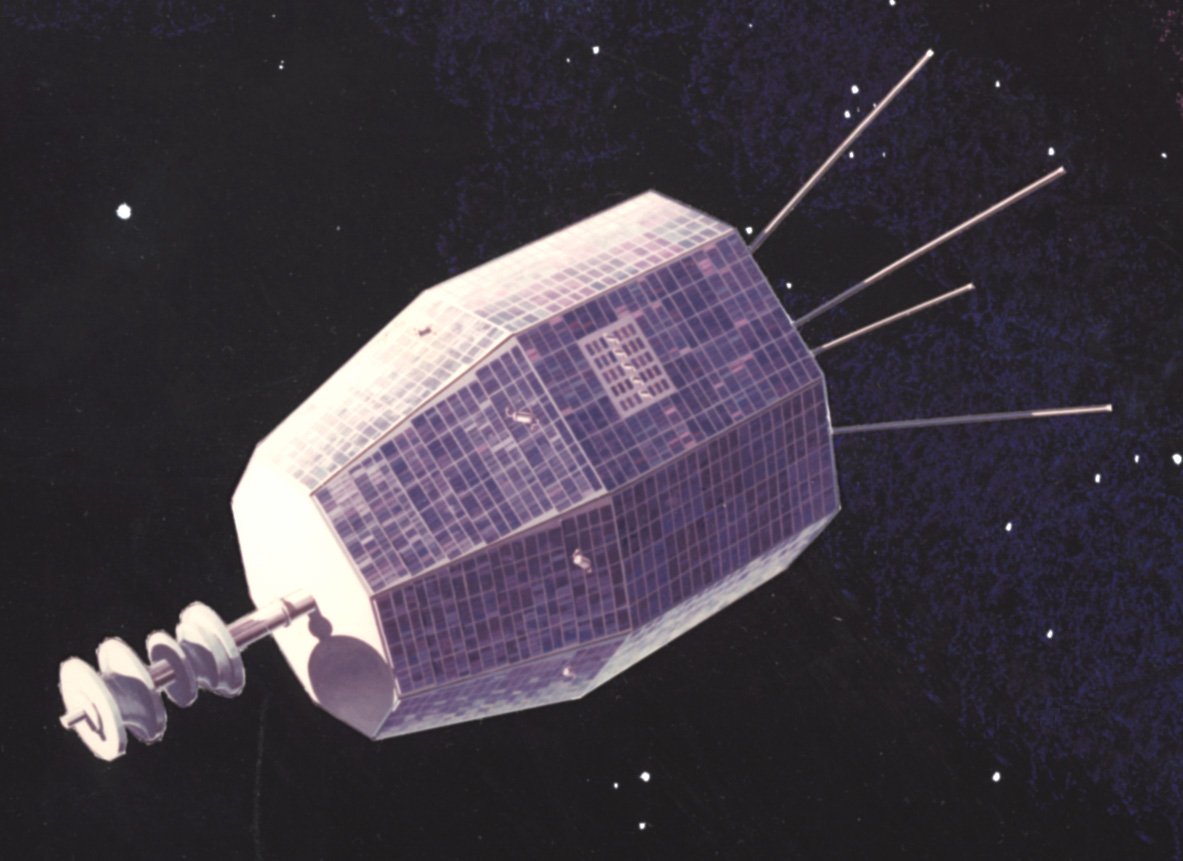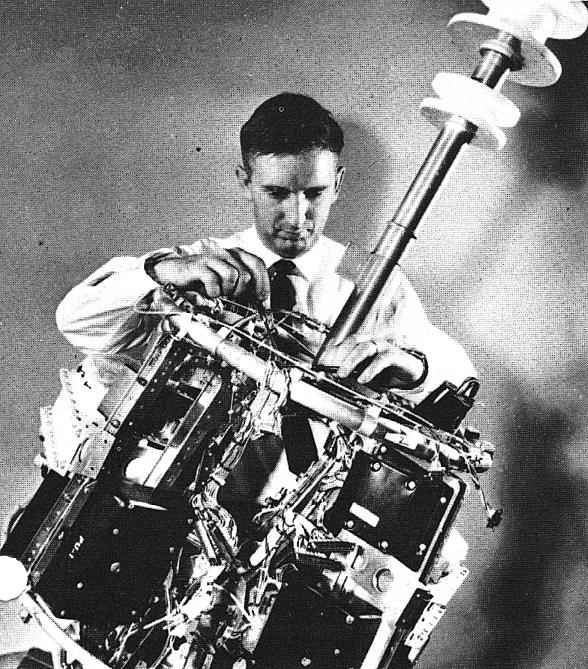Relay program on:
[Wikipedia]
[Google]
[Amazon]
 The Relay program consisted of Relay 1 and Relay 2, two early American
The Relay program consisted of Relay 1 and Relay 2, two early American

 Relay 1 (
Relay 1 (
 Relay 2 (COSPAR satellite ID: Relay 2 1964-003A) was launched atop a Delta B rocket (373/D-23) on January 21, 1964, from LC-17B at
Relay 2 (COSPAR satellite ID: Relay 2 1964-003A) was launched atop a Delta B rocket (373/D-23) on January 21, 1964, from LC-17B at
Relay 1
*
Relay 2
* NASA FACTS PROJECT RELAY G-12-62 {{Use American English, date=January 2014 1962 in spaceflight NASA programs History of telecommunications Communications satellites Satellites orbiting Earth 1964 in spaceflight Spacecraft launched in 1962 Spacecraft launched in 1964 Satellites of the United States
 The Relay program consisted of Relay 1 and Relay 2, two early American
The Relay program consisted of Relay 1 and Relay 2, two early American satellite
A satellite or an artificial satellite is an object, typically a spacecraft, placed into orbit around a celestial body. They have a variety of uses, including communication relay, weather forecasting, navigation ( GPS), broadcasting, scient ...
s in elliptical medium Earth orbit
A medium Earth orbit (MEO) is an geocentric orbit, Earth-centered orbit with an altitude above a low Earth orbit (LEO) and below a high Earth orbit (HEO) – between above sea level.
. Both were primarily experimental communications satellite
A communications satellite is an artificial satellite that relays and amplifies radio telecommunication signals via a Transponder (satellite communications), transponder; it creates a communication channel between a source transmitter and a Rad ...
s funded by NASA
The National Aeronautics and Space Administration (NASA ) is an independent agencies of the United States government, independent agency of the federal government of the United States, US federal government responsible for the United States ...
and developed by RCA
RCA Corporation was a major American electronics company, which was founded in 1919 as the Radio Corporation of America. It was initially a patent pool, patent trust owned by General Electric (GE), Westinghouse Electric Corporation, Westinghou ...
. As of December 2, 2016, both satellites were still in orbit. Relay 1 provided the first American television transmissions across the Pacific Ocean.
Relay 1

 Relay 1 (
Relay 1 (COSPAR
The Committee on Space Research (COSPAR) was established on October 3, 1958 by the International Council for Science, International Council for Scientific Unions (ICSU) and its first chair was Hildegard Korf Kallmann-Bijl. Among COSPAR's objec ...
satellite ID: Relay 1 1962-Beta-Upsilon 1 (62BU1)) was launched atop a Delta B rocket (355/D-15) on December 13, 1962, from LC-17A at Cape Canaveral Air Force Station
Cape Canaveral Space Force Station (CCSFS) is an installation of the United States Space Force's Space Launch Delta 45, located on Cape Canaveral in Brevard County, Florida.
Headquartered at the nearby Patrick Space Force Base, the sta ...
. Its payload included radiation
In physics, radiation is the emission or transmission of energy in the form of waves or particles through space or a material medium. This includes:
* ''electromagnetic radiation'' consisting of photons, such as radio waves, microwaves, infr ...
experiments designed to map the Earth's radiation belts.
The spin-stabilized satellite had an initial spin rate of 167.3 rpm and an initial spin axis orientation with a declination of -68.3 deg and a right ascension of -56 deg. Its orbital period was 185.09 minutes, with an apogee of 7500 km and a perigee of 1300 km.
Shortly after launch, two basic problems evolved. One was the satellite's response to spurious commands, and the other was the leakage of a high-power regulator. This leakage caused the first two weeks of satellite operation to be useless. After this period, satellite operation returned to normal. The satellite carried one transmitter for tracking and one for telemetry
Telemetry is the in situ collection of measurements or other data at remote points and their automatic transmission to receiving equipment (telecommunication) for monitoring. The word is derived from the Greek roots ''tele'', 'far off', an ...
. The telemetry system was PCM
Pulse-code modulation (PCM) is a method used to Digital signal (signal processing), digitally represent analog signals. It is the standard form of digital audio in computers, compact discs, digital telephony and other digital audio application ...
at 1152 bit/s. Each 128 words per telemetry frame (of one second duration) used 113 words for the particle experiment.
Relay 1 was the first satellite to broadcast television from the United States to Japan. The first broadcast during orbit 2677 (1963-11-22, 2027:42-2048 (GMT), or 1:27 pm Dallas time) was to be a prerecorded address from the president of the United States to the Japanese people, but was instead the announcement of the John F. Kennedy assassination. On orbit 2678, this satellite carried a broadcast titled ''Record, Life of the Late John F. Kennedy'', the first television program broadcast simultaneously in the U.S. and Japan. In later orbits, NBC
The National Broadcasting Company (NBC) is an American commercial broadcast television and radio network serving as the flagship property of the NBC Entertainment division of NBCUniversal, a subsidiary of Comcast. It is one of NBCUniversal's ...
transmitted coverage of the funeral procession from the White House to the cathedral. In the three days following the Kennedy assassination, Relay 1 handled a total of 11 spot broadcasts; eight to Europe and three to Japan. All the useful passes of the satellite were made available to permit immediate coverage of the tragic events.
In August 1964, this satellite was used as the United States-Europe link for the broadcast of the 1964 Summer Olympics
The , officially the and commonly known as Tokyo 1964 (), were an international multi-sport event held from 10 to 24 October 1964 in Tokyo, Japan. Tokyo had been awarded the organization of the 1940 Summer Olympics, but this honor was subseq ...
from Tokyo
Tokyo, officially the Tokyo Metropolis, is the capital of Japan, capital and List of cities in Japan, most populous city in Japan. With a population of over 14 million in the city proper in 2023, it is List of largest cities, one of the most ...
, after the signal was relayed to the United States via Syncom 3. This marked the first time that two satellites were used in tandem for a television broadcast.
The leakage problem caused the spacecraft
A spacecraft is a vehicle that is designed spaceflight, to fly and operate in outer space. Spacecraft are used for a variety of purposes, including Telecommunications, communications, Earth observation satellite, Earth observation, Weather s ...
to revert to a low voltage state early in 1965. Sporadic transmission occurred until February 10, 1965, after which no usable scientific data was obtained.
Relay 2
 Relay 2 (COSPAR satellite ID: Relay 2 1964-003A) was launched atop a Delta B rocket (373/D-23) on January 21, 1964, from LC-17B at
Relay 2 (COSPAR satellite ID: Relay 2 1964-003A) was launched atop a Delta B rocket (373/D-23) on January 21, 1964, from LC-17B at Cape Canaveral Air Force Station
Cape Canaveral Space Force Station (CCSFS) is an installation of the United States Space Force's Space Launch Delta 45, located on Cape Canaveral in Brevard County, Florida.
Headquartered at the nearby Patrick Space Force Base, the sta ...
. Apogee was 7600 and perigee 1870 km.
It was physically similar to Relay 1. Design changes in this satellite improved its performance so response to spurious commands was essentially eliminated.
NASA ceased operations with Relay 2 on September 26, 1965, with the repurposing of the Mojave Desert Ground Station, the only one in the world equipped to communicate with the satellite, for use with the Applications Technology Satellite
The Applications Technology Satellites (ATS) were a series of experimental satellites launched by NASA, under the supervision of, among others, Wernher von Braun. The program was launched in 1966 to test the feasibility of placing a satellite int ...
program. The final broadcast was of Sen. B. Everett Jordon (D-N.C.) opening the week-long International Exposition of the American Textile Machinery Association in Exposition Hall in Atlantic City.
One of the two onboard transponder
In telecommunications, a transponder is a device that, upon receiving a signal, emits a different signal in response. The term is a blend of ''transmitter'' and ''responder''.
In air navigation or radio frequency identification, a flight trans ...
s operated normally until November 20, 1966. From that time until its failure on January 20, 1967, it required a longer time than normal to come on. The other transponder continued to operate until June 9, 1967, when it too failed to operate normally.
See also
* List of communications satellite firsts * Launch data: ** 1962 in spaceflight (July–December) (Relay 1) ** 1964 in spaceflight (January–June) (Relay 2) *State funeral of John F. Kennedy
The state funeral of U.S. President John F. Kennedy took place in Washington, D.C., during the three days that followed his assassination on Friday, November 22, 1963, in Dallas, Texas.
Kennedy's body was brought back to Washington after his ...
References
External links
* NASA Space Science Data Center description: *Relay 1
*
Relay 2
* NASA FACTS PROJECT RELAY G-12-62 {{Use American English, date=January 2014 1962 in spaceflight NASA programs History of telecommunications Communications satellites Satellites orbiting Earth 1964 in spaceflight Spacecraft launched in 1962 Spacecraft launched in 1964 Satellites of the United States